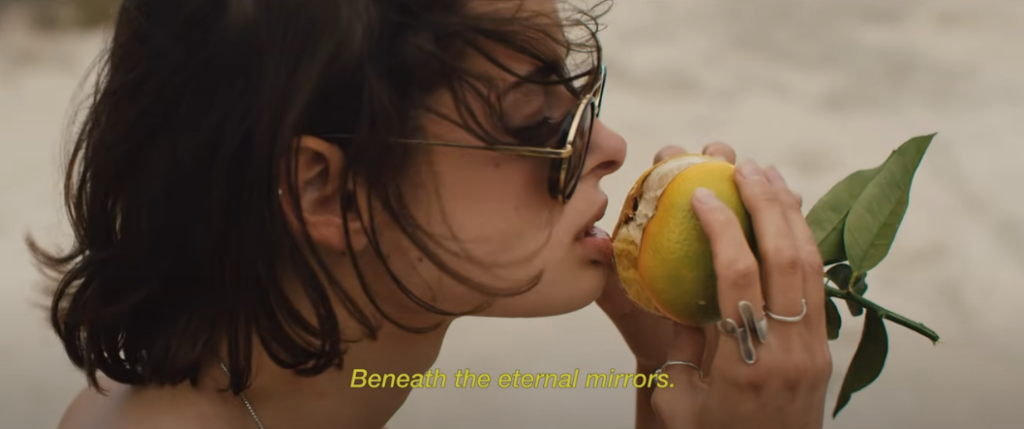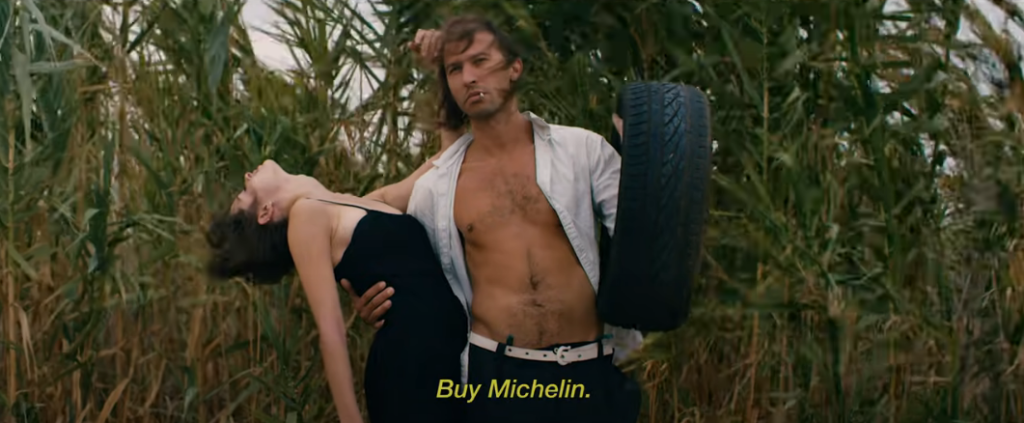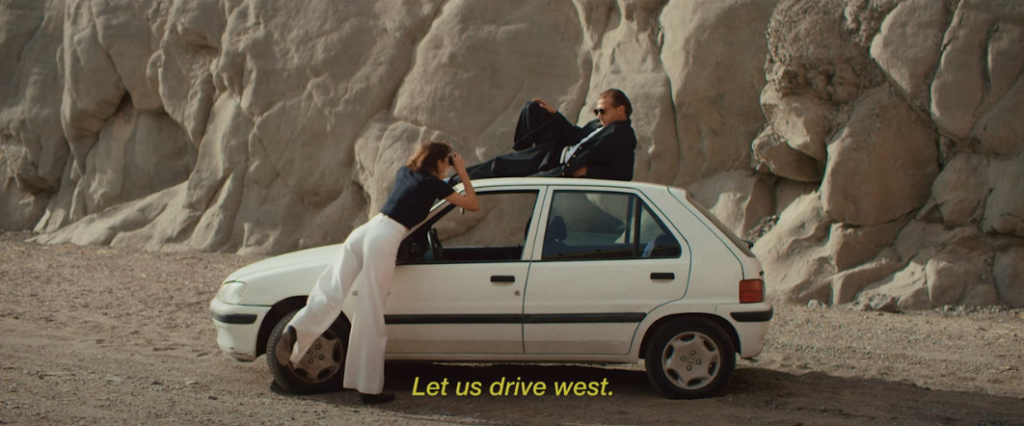STENCIL.ONE
Building Worlds with Music
![]() Software version 1.1.1
Software version 1.1.1
A Director’s Approach to 45-Minute Epics
Stencil had the privilege of speaking with renowned cinematographer and director Greg Blakey from Introvert Films, whose work behind the camera has shaped music videos for some of the biggest names in the industry. With millions of global viewers captivated by his creations, we’re thrilled to share his insights into the intricate process of crafting these visual masterpieces. From directing 45-minute epic music narratives to capturing the essence of a single take in meditative visualizers, Greg’s expertise continues to push the boundaries of music video storytelling.
Hi Greg and thanks for joining us today. Your video for Kerala Dust called ‘Live, West’ is a fascinating music adventure. I’ve never seen anything quite like it. It’s a mash-up of a music video, a narrative adventure, sprinkled with absurdist images and interesting (at moments poetic and at other moments comic) subtitles which really engage the audience. I often found myself scratching my head or laughing trying to figure out the hidden meaning in the subtitles. I felt like this music video had so much packed in. The most upvoted comment on this video’s YouTube page calls it a “Masterpiece!”. With hindsight seeing a risk like this pay off must feel nice. But beforehand communicating riskier approaches must come with some additional stress. As a director and cinematographer how challenging is it for you to communicate visions that are pretty far left of center? Do you find it a challenge to get other collaborators on board with your stranger ideas?
It’s something I’m very proud of and it was quite an epic journey to create. We recorded this during the pandemic, so it was spontaneous on multiple levels. We found a short window between lockdowns and it snowballed into an amazing collaboration between Ed and me.
I only met the actress 2 days into the location scouting and planning, and the actor Petar was running riot quite naturally. It all became a natural collision, and to be honest, we simply set the stage and built a space for the frustrations of that time and modern relationships to be explored.
The whole experience had a very cosmic feel about it. There was very little planning, and we just captured that experience and leaned into the transformative journey. We rolled with the strange dreams while sleeping in the caves in the desert, and the whole experience felt very organic and transcendental.

Tell me a little bit more about the birth of the subheading idea for that music video. For you, what’s the most important subtitle within the video?
I have to give full credit to Ed for his desire to explore the deeper layers of the characters and songs. It was a brilliant decision.
What was your gear of choice for this music video?
At the time, I had a red filter and some Russian lenses, so we just used those.

17:22… explain
The film delves into the theme of detachment in modern relationships, reflecting Sonja’s dreamlike consciousness. It explores the journey of imagination transforming into unattainable desire and delves into the conflicts in the psyche that arise from the rupture of these desires in the conscious space.
Your casting is incredible. How did you go about finding your on-screen talent for this production? Also, tell me a bit more about your approach to casting in general. I loved the casting for your feature FIGAROS WÖLFE as well.
When casting, I always look for individuals who can elevate the character and ideas to a place beyond our imagination. In this case. Fortunately, when Peter’s girlfriend canceled last minute, we were lucky to have Sonja step in. Her spontaneous energy and open-mindedness had a significant impact, pushing us into uncharted territory.

Your locations are beautiful in your body of work. What’s your approach to location scouting? What are the most important elements you look for in a space?
Locations play a crucial role in capturing the essence and ethereal qualities of a film. They have a natural ability to enhance visual storytelling and reveal elements of the characters. Drawing from my experience in documentary filmmaking, I have learned to identify locations with inherent beauty that effortlessly complement the narrative. When searching for locations, I prioritize those that require minimal alterations and possess a unique charm, much like the actors, bringing us to a point where we reimagine what is possible.
I saw another video of yours a long time ago and I’ve always been fascinated by it. We’ve seen a trend in “visualizer” videos which give movement to music but taking more of an under-produced approach. But your visualizer for Kerala Dust’s Pulse VI is quite unique. I’m strangely captivated by the simplicity of it. Can you tell me a little bit more about how you conceptualized this video? And why a visualizer over a full music video?
I am equally proud of this achievement, as it involved grappling with complex concepts and finding solutions with minimalistic courage. This has been one of the most challenging feats for me, highlighting the power of restraint and decision-making in film, which is often underestimated.
Are you surprised to see your visualizer video at over a million views while your 45 minute epic (which is a slightly older video) sitting at just over 200,000 views? Does it leave you scratching your head?
It’s reassuring to see how the attention of 200K people can be guided into a more meditative 40-minute experience within the online space. “Live West” was a unique piece, and we had a lot of fun playing with capturing and guiding the attention spans of a distracted audience base.
You’ve been the cinematographer on some pretty high profile music videos as well, including the music video for James Arthur’s “Safe Inside” which has almost 50 million views on YouTube. Now let’s rewind back to the day you shot your first music video. What would you say are the biggest creative changes you’ve noticed within yourself that have allowed you to develop as an artist when working within the realm of music?
I believe there are countless things to learn. Firstly, it’s about discovering your unique style and finding ways to express it using available technology. Additionally, the human factor is crucial. I have personally found myself needing to learn a lot about when to take the lead, when to listen, and how to work for the improvement of the project over my own artistic pursuits.
I believe the final part is the most crucial. If you find that you have more to offer than the space permits, you should concentrate on developing your ideas into your own work instead of trying to blend them with something else. I think this approach establishes clear boundaries and maintains harmony within the team and the process.
Similarly, how would you like to see yourself progressing as a music video director in the future? Now that you’ve worked for many years in the industry, what type of projects do you find yourself gravitating towards more and more? Why?
The visualizer serves as a great example of the direction I aim to pursue. In a world filled with ideas, it’s refreshing to disrupt that noise with unique approaches.
When you’re working on a larger music video production, how hard or easy is it to get your own creative voice through? Or is this even important for you as a cinematographer working on a music video? What’s the main takeaway that you want to walk away from a music video project with?
It has always been crucial for me to cultivate a strong relationship with the director. I am naturally inclined to collaborate, and when we can align on essential concepts and goals, the process becomes quiet and focused. Alternatively, if that shared vision or ability to connect is missing, it can be quite exhausting and turn into a nightmare. I really try to avoid this, but sometimes I have to find alternative ways to work through it.
You work as a cinematographer on many videos that are directed by someone else. However, you also work as both a cinematographer as well as director on some music videos. Do you have a preference for one over the other? Why?
I enjoy the unique challenges of both roles. As a director of photography, I can enjoy visual story telling and resolve the director’s vision, while as a director, I can provide support and hold space for the team.
On behalf of both ourselves as well as our audience I just want to say thanks for taking the time to chat with us today Greg. To our audience – To check out more of Greg’s work you can head over to his website here. or Introvert Films Website here.

All-In-One Film Production Software
Stencil comes will all of the tools you need to manage your film production studio. We help you manage storytelling, budgeting, casting, location scouting, storyboarding and so much more!
![]() Software version 1.1.1
Software version 1.1.1

A software solution designed to help filmmakers complete compelling stories.
![]() Version 1.1.1
Version 1.1.1
USE CASES
Feature Films
Documentaries
Shorts
Music Videos
Commericals
Fashion Films